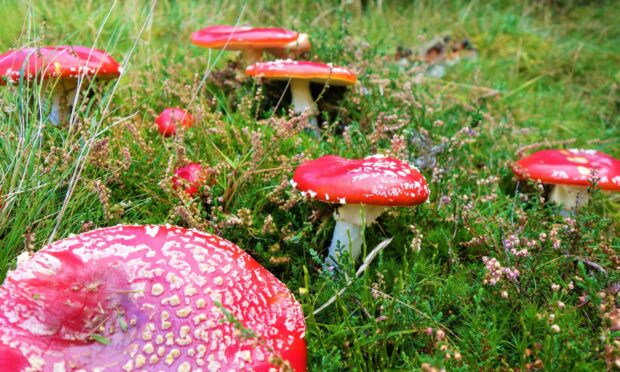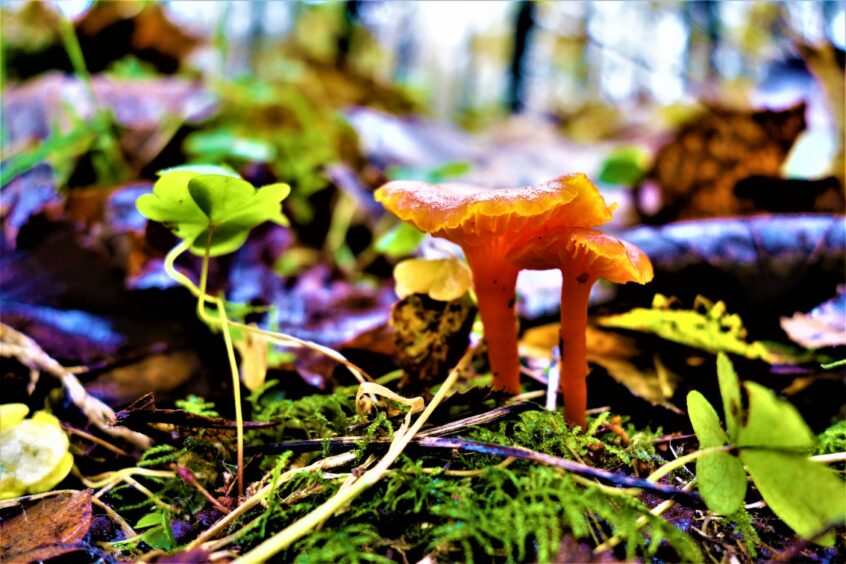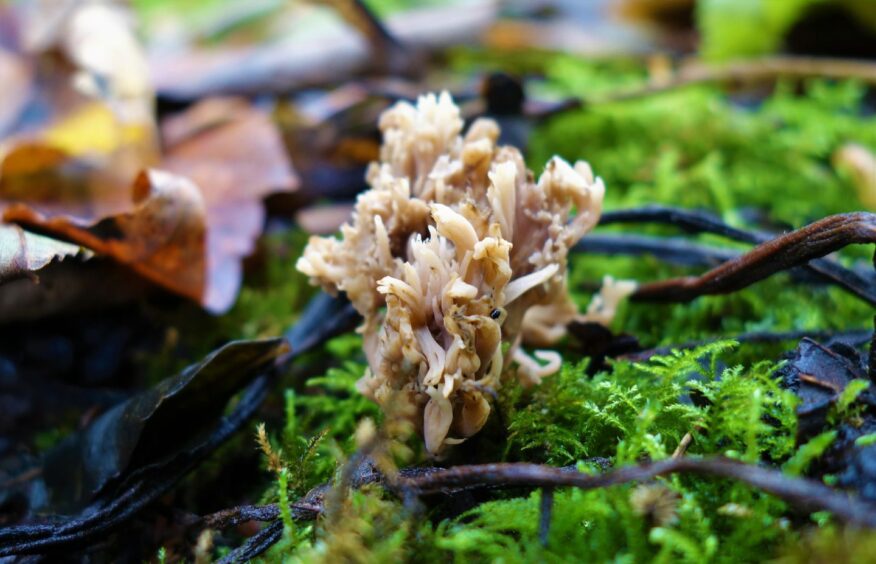I trod carefully across this woodland path; each footfall softened by a cushion of newly fallen leaves as I carefully scanned the ground in search of fungi.
An orange glimmer soon caught my eye and I hunkered down for a closer look – a clump of honey waxcaps!
They were small toadstools, little tangerine gems with glistening dew-speckled caps and glowing with such burning intensity that one was quickly drawn deep within their alluring hold.
Their beauty of form and brightness of colour was beguiling, and it felt wonderful to be down at eye level on the woodland floor.
It was like entering a different world, with a rich, heady aroma of leaf mould enveloping my senses, almost as if the very essence of the earth was filling my lungs.
I started to examine the immediate area around me and noticed a strange, wrinkled, greyish nugget poking up through the ground litter.
It was a coral fungus, an unusual and convoluted little mass which I wouldn’t have spotted unless I was down close to the forest floor.
On a nearby tumbled branch, little yellow cylindrical flecks stood proud, each one no more than 5mm tall.
It was a cluster of small stagshorn fungus, which once again I had only detected because my eyes were at ground level.
These finds underlined the immense variety of fungi in our environment, ranging from familiar types such as toadstools to others that are club or bracket shaped, or form encrusting moulds on decaying wood.
Such diversity in shape and form is matched by the dazzling array of colours featured by different species, including every shade of red imaginable, ochres, yellows, and hues of orange.
Earlier that day on a wooded hill slope, I had stumbled upon a group of fly agarics, their white-flecked scarlet caps arranged in a tier on an incline, and which reminded me of a vibrant scene from some fairy tale book. It was truly magical.
If spring and summer are all about wildflowers, then autumn is the season when fungi come to the fore and bring new colour to the landscape, and when they do burst forth, it is a reminder of their essential place in our environment.
The toadstools we see at this time of year are their fruiting bodies designed to produce and distribute spores and are only fleeting ghosts in the wind that appear for a very short time.
While many types of fungi are largely unseen for much of the rest of the year, they are still there, working their quiet magic whether it be in the soil or in decaying wood, or even in the air that we breathe.
Fungi are everywhere, and without them our world would lack heart, for they aid growth of trees through mutually beneficial relationships, drive organic decomposition, recycle nutrients back into the soil, and touch our lives in so many other diverse ways, including the yeasts that give us our daily bread, and for crucial medicines such as penicillin.
Fungi are also essential in the production of drinks such as beer and wine, and when next imbibing, I for one, will happily raise my glass in celebration to their wonderful diversity and environmental importance.













